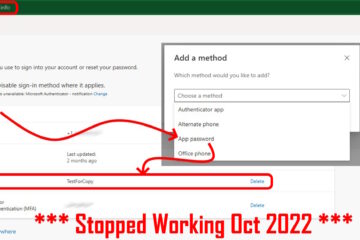Modern Approaches to Authentication and Security in Web Development
Websites are gateways to sensitive information. From online banking to e-commerce transactions, user data needs strong protection. Breaches can have devastating consequences, damaging user trust and causing financial losses. Thankfully, web developers have a toolbox filled with modern authentication and security practices to fortify web applications. This blog post dives into the website security best practices, empowering you to safeguard your website and its users.
Authentication: The First Line of Defense
Authentication verifies a user’s claimed identity before granting access. Here are some key web authentication methods to consider:
- Password-based Authentication: The classic username and password combo remains prevalent in web development security. However, you should implement strong password policies (e.g., minimum length, character variety) and enforce regular password changes.
- Multi-Factor Authentication (MFA): MFA adds an extra layer of security by requiring a secondary verification factor, such as a code sent via text message or generated by an authenticator app. This significantly reduces the risk of unauthorized access, even if a password is compromised.
- Token-Based Authentication: This authentication method for web applications uses short-lived tokens to identify users instead of relying solely on cookies. These tokens are more secure as they cannot be easily stolen or stored on the client side. JSON Web Tokens (JWTs) are a popular choice for their compact size and ease of integration.
- Passwordless Authentication: Emerging technologies like WebAuthn are revolutionizing authentication. This standard allows users to leverage fingerprint scanners, facial recognition, or security keys for login, eliminating the need for passwords altogether.
Implementing the best authentication methods is crucial in fortifying your web application security.
Defining Access Levels
Once a user is authenticated, authorization determines their access rights within the application. Here’s how to implement effective authorization:
- Role-Based Access Control (RBAC): Assign users to specific roles (e.g., admin, editor, user) and grant permissions based on those roles. This ensures users can only access features and data relevant to their assigned role.
- Attribute-Based Access Control (ABAC): This more granular approach considers various factors beyond just roles, such as location, device, or time, when granting access. For instance, an ABAC system might restrict access to financial data only to authorized users on specific company devices during business hours.
By carefully choosing the right approach, you can ensure your application gives each user the appropriate level of access, protecting sensitive data and functionalities.
Protecting Sensitive Information
Data security encompasses various measures to safeguard sensitive information stored on your website. Here are some key practices:
- Encryption: Encrypt data both at rest (stored on servers) and in transit (transmitted over networks). This renders data unreadable even if intercepted by attackers. Industry-standard encryption algorithms like AES (Advanced Encryption Standard) are recommended.
- Input Validation: Validate all user input to prevent malicious code insertion attacks like SQL and Cross-Site Scripting (XSS). Delete user input to remove any potentially harmful characters before processing it.
- Secure Coding Practices: Developers should follow secure coding principles to minimize vulnerabilities in the application code. This includes avoiding common coding errors and using libraries and frameworks known for their web development security focus. For developers seeking to build secure and strong web applications, choosing the best JavaScript frameworks in 2024 can go a long way in increasing security.
Implementing strong data security measures is essential for protecting sensitive information stored on your website. Remember, proactive measures taken today can prevent costly security incidents in the future.
Staying Ahead of Threats: Proactive Measures
Web security is an ongoing battle. Here’s how to stay vigilant:
- Regular Security Audits: Conduct periodic web-based security audits to identify and address potential vulnerabilities in your website’s code, configuration, and infrastructure. This is crucial for web security best practices.
- Stay Updated: Software libraries and frameworks frequently receive updates that patch security vulnerabilities. Keep your software components up-to-date to address newly discovered threats.
- Security Awareness Training: Educate employees about common cyber threats. This can significantly reduce the risk of human error, leading to security breaches.
By implementing these modern authentication and security practices, web developers can create a strong and secure web ecosystem. Remember, security is an ongoing process. Stay informed about emerging threats, adopt new security measures as they evolve, and continuously monitor your website for vulnerabilities. By prioritizing security, you can build trust with your users and ensure a safe and reliable online experience.
Bonus Tip: Consider using a Content Security Policy (CSP) to define a set of trusted sources for scripts and other resources that can be loaded on your website. This helps mitigate the risk of malicious code injection attacks.





0 Comments